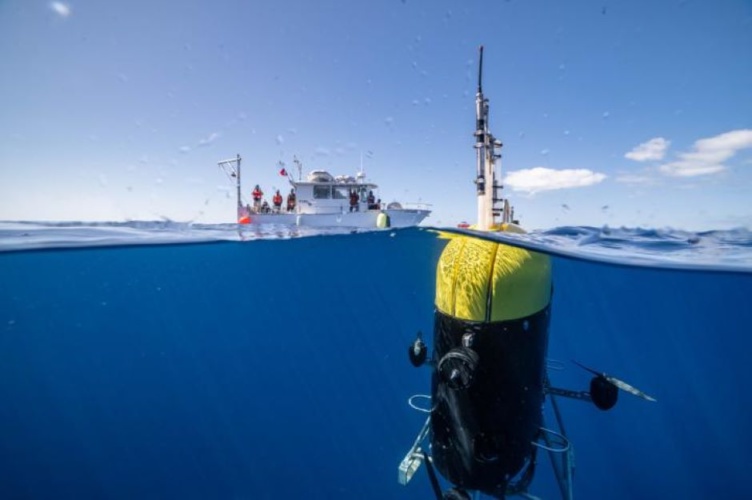
Capable of tracking and recording high-resolution images of slow-moving and fragile zooplankton, gelatinous animals, and particles, Mesobot is providing scientists with a capability to observe creatures in their mesopelagic habitat with minimal disturbance. Mesobot will also enable greater understanding of the role these creatures play in transporting carbon dioxide from the atmosphere to the deep sea.
Mariana Trench: US explorer completes deepest ever submarine dive
Deep Impact: engineering an expedition to the oceans’ deepest points
In a paper published June 16 in Science Robotics, Woods Hole Oceanographic Institution (WHOI) senior scientist Dana Yoerger presented Mesobot as a versatile vehicle for achieving a number of science objectives in the twilight zone.
"Mesobot was conceived to complement and fill important gaps not served by existing technologies and platforms," Yoerger said in a statement. "We expect that Mesobot will emerge as a vital tool for observing midwater organisms for extended periods, as well as rapidly identifying species observed from vessel biosonars. Because Mesobot can survey, track, and record compelling imagery, we hope to reveal previously unknown behaviours, species interactions, morphological structures, and the use of bioluminescence."
Co-authored by research scientists and engineers from WHOI, MBARI (Monterey Bay Aquarium Research Institute), and Stanford University, the paper outlines the robot's success in autonomously tracking two gelatinous marine creatures during a 2019 research cruise in Monterey Bay. High-definition video revealed a Solmissus (‘dinner plate’), jellyfish ‘ramming’ a siphonophore. Mesobot also recorded a 30-minute video of a giant larvacean, which the team said appears to be nearly motionless but is riding internal waves that rise and fall 6m. These observations represent the first time that a self-guided robot has tracked these small, clear creatures as they move through the water column like a ‘parcel of water,’ said Yoerger.
"Mesobot has the potential to change how we observe animals moving through space and time in a way that we've never been able to do before," said Kakani Katija, MBARI principal engineer. "As we continue to develop and improve on the vehicle, we hope to observe many other mysterious and captivating animals in the midwaters of the ocean, including the construction and disposal of carbon-rich giant larvacean 'snot palaces.'"
The hybrid robot is outfitted with a suite of oceanographic and acoustic survey sensors and can be piloted remotely through a fibreoptic cable attached to a ship or released from its tether to follow pre-programmed missions or autonomously track a target at depths up to 1,000m. This autonomous capability will eventually enable Mesobot to follow a target animal for over 24 hours without human intervention, which is enough time to observe its migration from the midwater twilight zone to the surface and back. Future studies with Mesobot could provide researchers with insights into animal behaviour during diel vertical migration, known as ‘the greatest migration on Earth’ because of the number and diversity of creatures that undertake it each night.
"By leveraging the data we've collected using Mesobot, and other data that we've been curating for 30-plus years at MBARI, we hope to integrate smarter algorithms on the vehicle that uses artificial intelligence to discover, continuously track, and observe enigmatic animals and other objects in the deep sea," Kakani said.




Project to investigate hybrid approach to titanium manufacturing
What is this a hybrid of? Superplastic forming tends to be performed slowly as otherwise the behaviour is the hot creep that typifies hot...